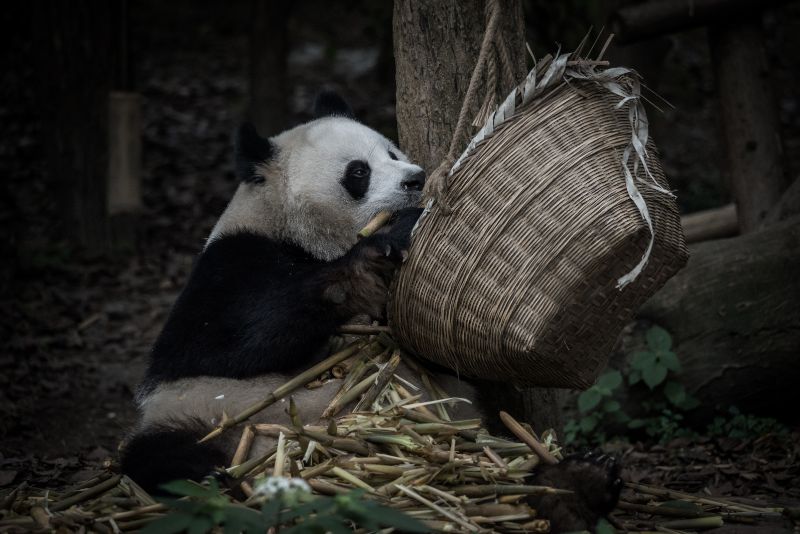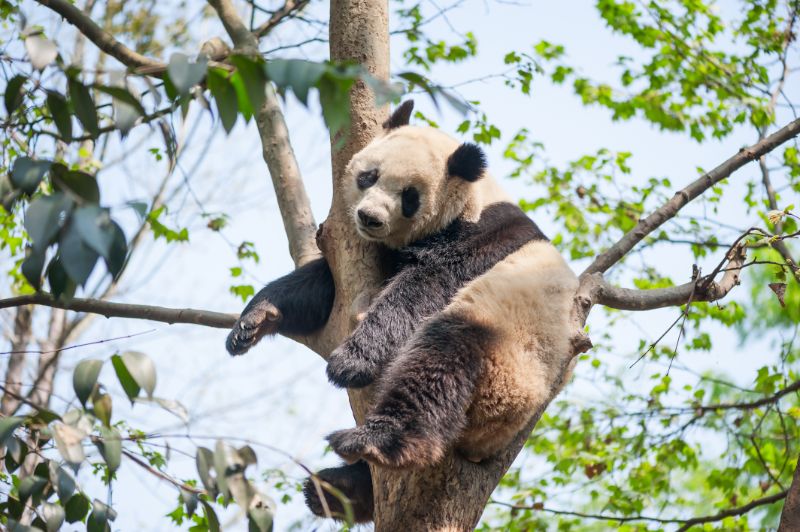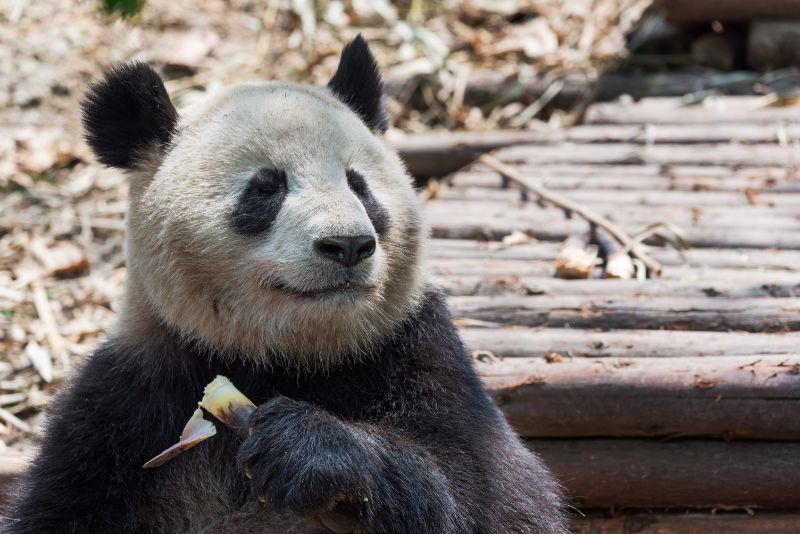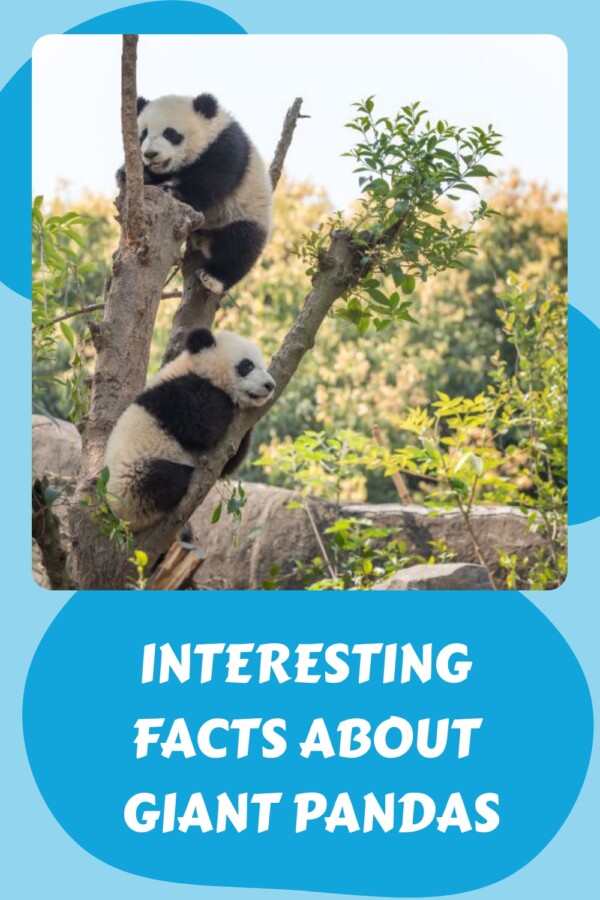Giant pandas are undoubtedly one of the most recognizable creatures globally, adored by all who come across them. These black and white bears hail from China and are often depicted in the media as peaceful and soothing animals. However, did you know many fascinating facts about giant pandas are not widely known?
These creatures are full of surprises and hold much knowledge that we can learn about the natural world. These are several interesting facts to know about giant panda.
This blog post will delve into some of the most intriguing facts about giant pandas, from their unique communication methods and specialized dietary requirements. Whether you love animals, are an environmentalist, or are just curious about baby pandas, you will find these captivating insights into the lives of these remarkable animals quite enlightening.
Top 10 Interesting Facts About Giant Pandas
1. Giant pandas are native to China and live mainly in the Sichuan, Shaanxi, and Gansu provinces

Giant pandas are a species of bear that is native to China and lives mainly in the provinces of Sichuan, Shaanxi, and Gansu. Giant pandas live and are very large animals, growing up to four feet tall and weighing up to 350 pounds.
They are easily recognizable by their large black and white patches. The giant panda’s diet consists almost entirely of bamboo, which makes the pandas eat up 99% of its diet. These animals are endangered and are under protection in the wild, though their numbers have been increasing in recent years.
2. Giant pandas usually grow to between 4 and 6 feet in length and can weigh up to 250 pounds

A giant panda’s size is one of its most fascinating and amazing characteristics. On average, they usually grow to between 4 and 6 feet in length and can weigh up to 250 pounds. Their thick fur helps protect them from the cold climate of their natural habitat.
While giant pandas may be significant, their diet consists mainly of bamboo, which is low in calories, resulting in a relatively slow growth rate. These majestic creatures also have a life span of up to 20 years in the wild, making them unique and beloved animal and endangered species.
3. Panda bears are solitary animals, meaning they live and forage alone

Giant pandas are solitary animals, meaning they live and forage alone. These animals prefer to live independently, as they are generally shy and not very social with other pandas or bears. They are territorial and will fight off other pandas if they come too close.
In the wild, pandas and other bears may spend some time together in small groups, but they will mostly spend their time alone. This behavior is unique among bears, as other species are generally social animals that live and hunt together.
4. Giant pandas are omnivorous and mainly eat bamboo, but they will occasionally eat other plants, small animals, and insects

When discussing facts about giant pandas, it’s worth noting that these animals are omnivores. They primarily consume bamboo but occasionally turn to other plants, small animals, or insects to supplement bamboo forests in their diet.
This behavior is a result of their adaptation to their environment. While it’s uncommon for pandas to live on, giant pandas will consume meat if they choose. Typically, though, they stick to bamboo shoots, leaves, and stems.
5. Giant pandas are considered a vulnerable species, with an estimated 1,600 living in the wild and 350 in zoos and breeding centers

Giant pandas are one of the most iconic animals on the planet and are often considered a symbol of conservation. They are also considered a vulnerable species, with an estimated 1,600 living in the wild and 350 in zoos and breeding centers. This makes it essential to take conservation measures to ensure the giant panda cub population does not decline further.
The giant panda is an interesting species, with a unique black and white coat and the ability to consume vegetation and meat. In addition to eating bamboo, their diet consists of bamboo forests made almost entirely of bamboo, which makes them the only species of bear to feed this way. They are also excellent climbers and can climb up to seventy feet daily to search for food.
These are just a few interesting facts about giant pandas; there is much more to learn about this special species of female pandas.
See Related: Encouraging Endangered Species Success Stories
6. Giant pandas are excellent climbers and can reach speeds of up to 25 miles per hour

The giant panda is an impressive animal for its climbing ability. It can move quickly and efficiently up trees and other objects and has been recorded reaching speeds of up to 25 miles per hour. This is especially remarkable when you consider that the giant panda’s body is far heavier than other animals of similar size. This impressive skill is handy for these animals as they climb trees to escape the dangers of their natural environment.
7. The gestation period for a giant panda is usually between 95 and 160 days

The gestation period for a giant panda is usually between 95 and 160 days. This is a comparatively long birthing period for mother panda for such a small animal, and it is made even more fascinating because it is the most extended gestation period for any carnivore.
Additionally, the giant panda’s newborn cub is one of the smallest in the animal kingdom, weighing only 3 to 5 ounces. This incredible combination of length and brevity makes the giant panda unique.
8. Giant pandas typically live between 15 and 20 years

Giant pandas are a long-living species, typically living between 15-20 years in the wild. In captivity, they can live much longer, up to 30 years, due to the protection and care provided to male pandas by their zookeepers.
The age of newborn pandas in a wild giant panda can be challenging to determine, as they are not often seen in the wild and may be difficult to recognize, especially when they are young. However, scientists can track the age of adult pandas by studying tooth formation and wear.
9. The average litter size for a giant panda is one to two cubs

One of the most interesting facts regarding the giant panda is its average litter size. Most species of animals produce a large number of offspring in a single litter. However, the giant panda has only one to two cubs in a litter, making the species vulnerable to extinction.
This small litter size is likely due to the difficulty of raising young in the panda’s mountainous and forested habitats. Conservationists do their best to protect these beautiful creatures but must take special care to ensure their populations remain strong.
10. Giant pandas are known to be brilliant animals

Giant pandas are known to be brilliant animals, able to learn, adapt, and understand their environment. These animals exhibit complex social behaviors, such as play-fighting and grooming.
As their natural habitats decrease and the human population encroaches on their remaining habitats, giant pandas become increasingly threatened. Conservation efforts are being made across the globe to protect these animals from human populations and their habitats.
In the end, the giant panda is absolutely a unique animal. They have special adaptations that allow them to thrive in the wild.
From their unique diet to their unique fur color, they are a fascinating species that has captured the hearts of many people worldwide. The giant panda is an animal that deserves to be protected and respected hours a day everywhere, and we should all do our part to help conserve them.
See Related: Endangered vs Threatened vs Extinct Species
FAQs
How many giant pandas are left?
As of the latest data, approximately 1,864 giant pandas are left in the wild. Despite their iconic status and relative lack of natural predators, pandas are at risk, primarily due to habitat loss. The Chinese government has established over 50 panda reserves, but only around 67% of the total wild panda population resides in these reserves.
Why do giant pandas only live in China?
Giant pandas only live in China because their primary habitat is southwest China’s temperate broadleaf and mixed forests. These forests provide the bamboo diet that pandas rely on.
Despite establishing reserves, infrastructure development expanding human populations is increasingly fragmenting and isolating panda populations, preventing them from finding new bamboo forests and potential mates.
Why are giant pandas so big?
Giant pandas are large due to their diet and lifestyle. Giant pandas eat almost entirely bamboo, which is low in nutrients, so they must consume large quantities daily, leading to their substantial size. Adult giant pandas diet by females can grow to about 200 pounds, while males can grow to about 300 pounds. Despite their size, these bears are excellent tree climbers.
Related Resources:
- How to Create an Apartment Garden: A Step-by-Step Guide
- Most Endangered Species in Alaska
- Most Endangered Species in Canada


